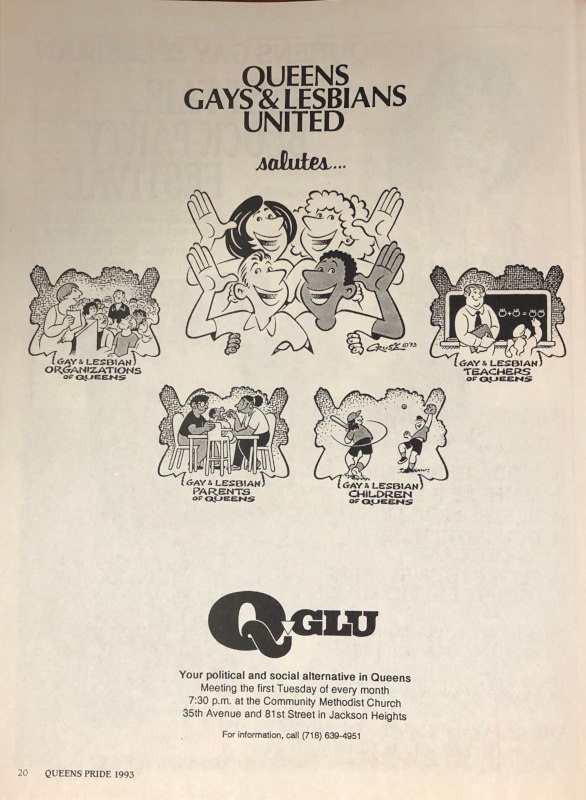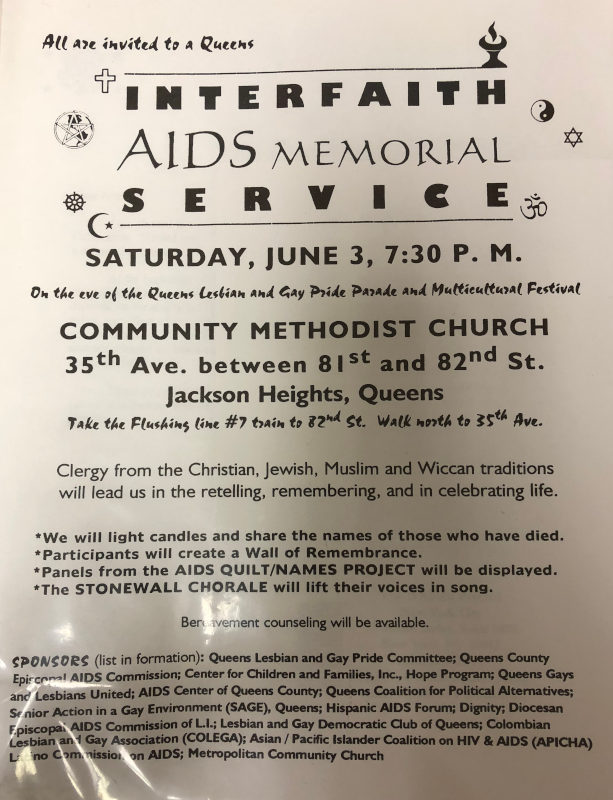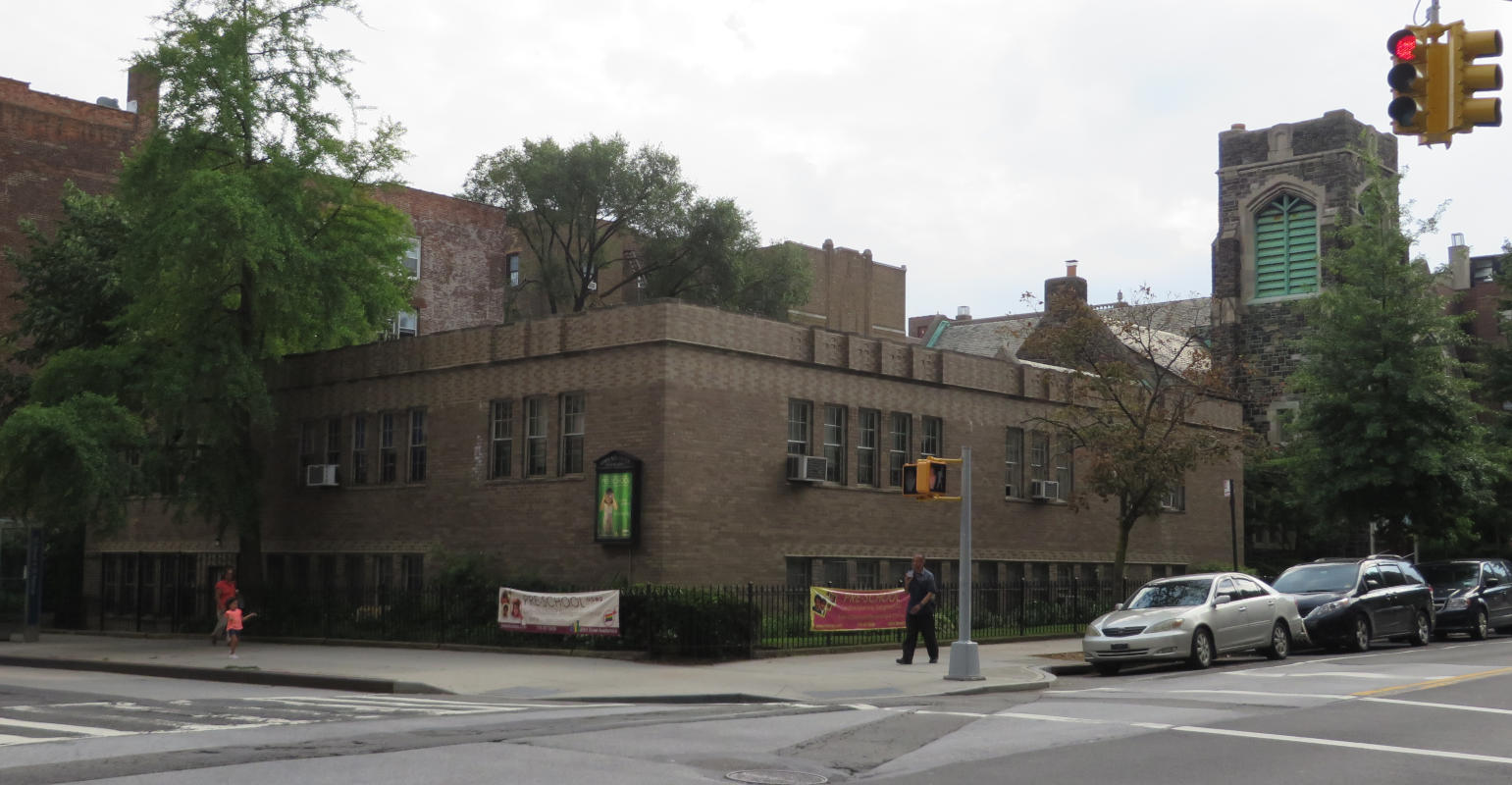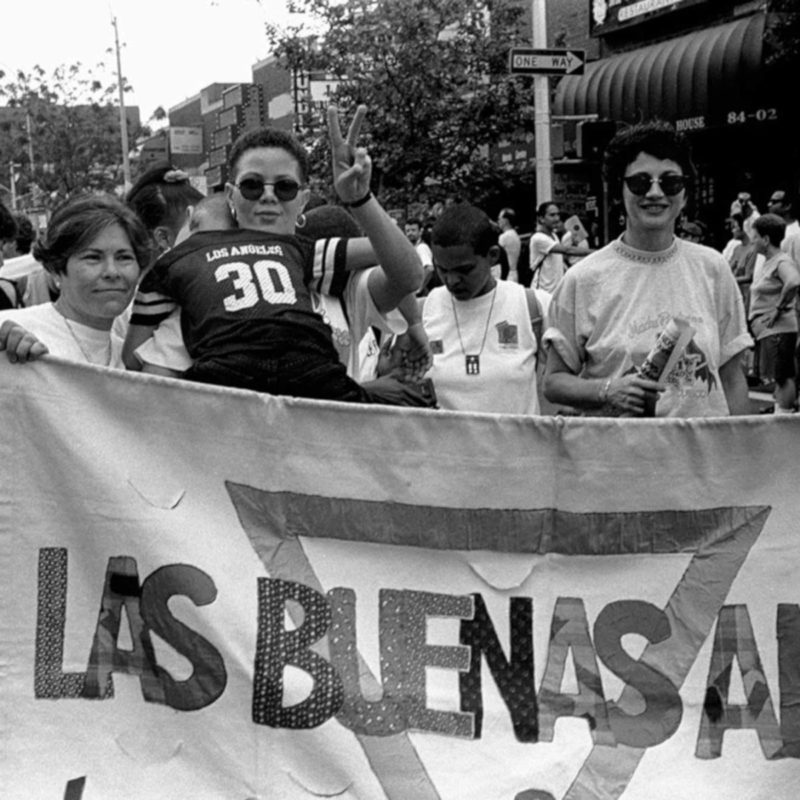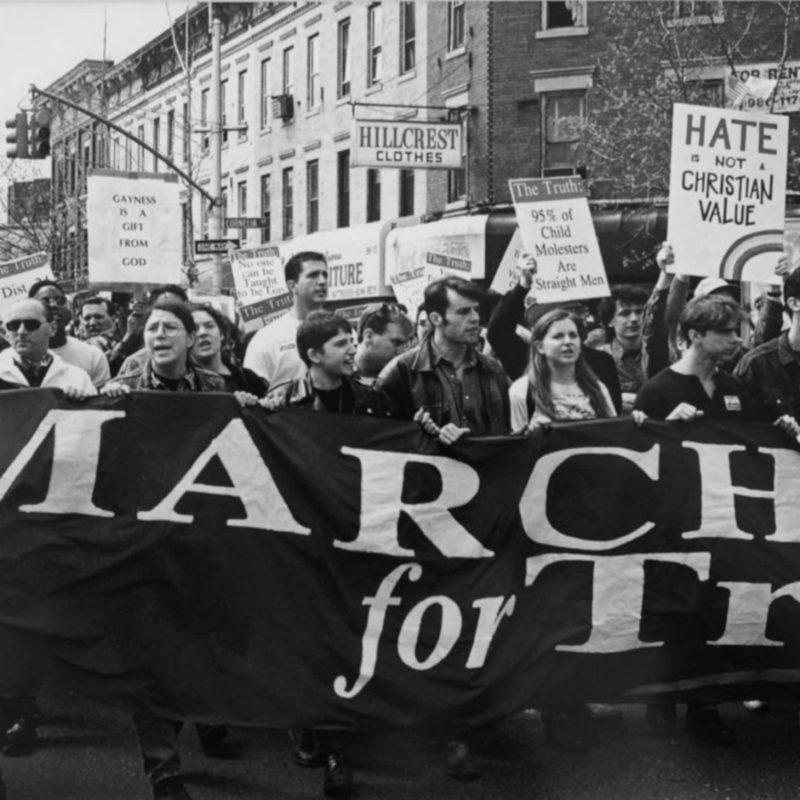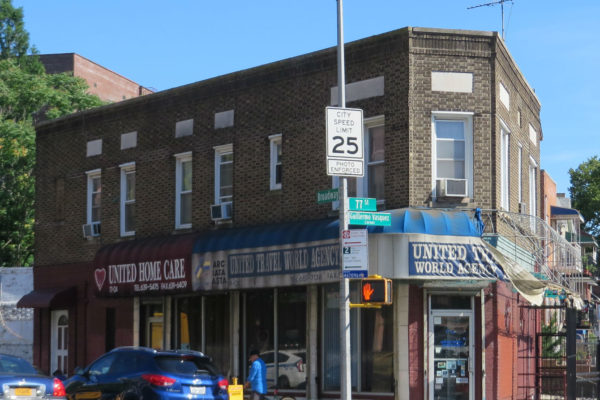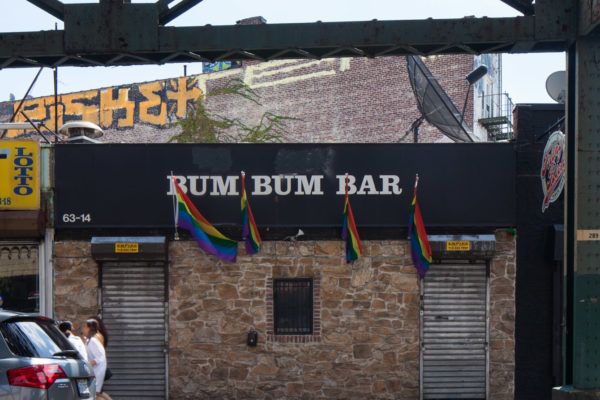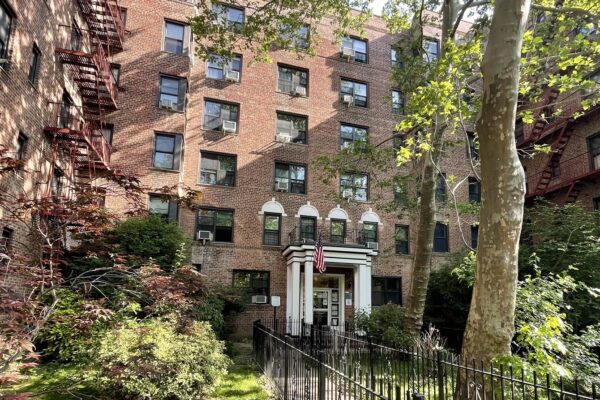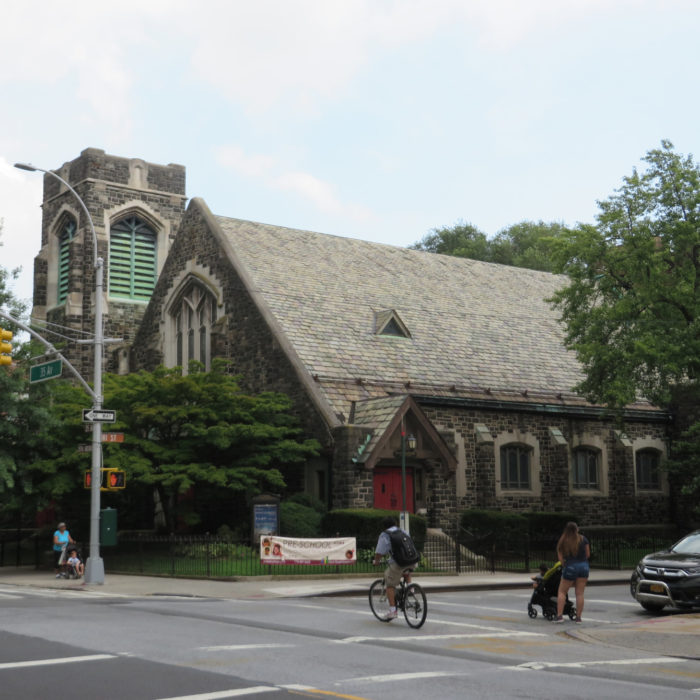
Community United Methodist Church
overview
This Jackson Heights church, opened in 1923, became an important hub for diverse community groups, including LGBT groups, beginning in the mid-1970s.
During the 1990s, it was the meeting location of the influential group Queens Gays and Lesbians United (Q-GLU), which provided support to local LGBT residents and promoted gay visibility in the borough.
On the Map
VIEW The Full MapHistory
The Community United Methodist Church, along with a garden and 1950s Sunday School, occupies the entire block front of 35th Avenue between 81st and 82nd Streets, in Jackson Heights, Queens. Beginning under the leadership of Reverend Austin Armitstead, the church’s pastor from 1974 to 1995, it has served multi-language ministries and provided meeting space for many community groups, reflecting the neighborhood’s ethnic diversity and LGBT presence. Gay people who met here recalled a time when Reverend Armitstead confronted anti-gay protestors outside the church.
In 1990, the City Charter was amended to create more City Council seats, including one for Jackson Heights. According to community activist Ed Sedarbaum, a first-ever candidates’ night focusing on LGBT issues and HIV/AIDS was held that summer at this church, with over 100 people in attendance.
Later that year, this group of attendees was invited to Sedarbaum’s Jackson Heights apartment to discuss the possibility of creating an LGBT organization in Queens and what it should focus on. This led to the formation of Queens Gays and Lesbians United (Q-GLU), co-founded by Sedarbaum and Susan Caust in 1991. Its founding, as with other groups in the borough, was also prompted by the gay-bias murder of Julio Rivera and the homophobic reaction to the Children of the Rainbow curriculum, two watershed moments that transformed LGBT activism in Queens. In the documentary Julio of Jackson Heights (2016), Caust recalls that Q-GLU’s goal was to be an active voice for local/Queens issues in a way that larger organizations in Manhattan could not always be. Q-GLU did, however, work closely with the Manhattan-based Gay and Lesbian Anti-Violence Project (now the Anti-Violence Project) to improve relations between the LGBT community and the 115th Police Precinct by developing a training program for officers. This groundbreaking effort, made in response to the Rivera case, was adopted at precincts in other boroughs.
The bias murder of Julio Rivera [in 1990], and the dismal response to it by the authorities, had set the stage by demonstrating that our safety lies in increased visibility, not in hiding.
Q-GLU’s general meetings, held at the church throughout the 1990s, met the first Tuesday of every month and drew 50 to 100 people. Socializing followed a formal program, which included talks by activists such as Arnie Kantrowitz or LGBT journalists working in mainstream media (not just the gay press). The idea for the Queens Pride Parade was first proposed by Danny Dromm (who is now a City Councilmember) at a Q-GLU meeting.
The group was also a co-sponsor — along with the Latino Commission on AIDS, the AIDS Center of Queens County, the Metropolitan Community Church, and the Asian/Pacific Islander Coalition on HIV & AIDS (APICHA), among others — of an Interfaith AIDS Memorial Service held on June 5, 1999 at this church. Led by Christian, Jewish, Muslim, and Wiccan clergy, the event included the display of panels from the Names Project AIDS Memorial Quilt. Another memorial service was held the following year.
Entry by Amanda Davis, project manager (July 2019), and made possible by the New York State Council on the Arts with the support of Governor Andrew M. Cuomo and the New York State Legislature.
NOTE: Names above in bold indicate LGBT people.
Building Information
- Architect or Builder: F.P. Platt (church); Holden McLaughlin & Associates (Sunday School)
- Year Built: 1920-23 (church); 1953-54 (Sunday School)
Sources
Ed Sedarbaum, “Classes Improved Gays’ Ties to Police [letter to the editor, April 23, 1993],” The New York Times, May 4, 1993, A24.
Ed Sedarbaum, e-mail to NYC LGBT Historic Sites Project, October 26, 2020.
Ed Sedarbaum, interview with Richard Shpuntoff, December 30, 2010.
Ed Sedarbaum, phone call with Amanda Davis/NYC LGBT Historic Sites Project, September 2018.
“Inside Q-GLU,” newsletter, March 1999, in The Daniel Dromm Papers, The LGBTQ Collection, LaGuardia and Wagner Archives, LaGuardia Community College.
Jeffrey Schmalz, “For Gay People, A Time of Triumph and Fear,” The New York Times, March 7, 1993, 37.
Philip Kasinitz, Mohamad Bazzi, and Randal Doane, “Chapter 8: Jackson Heights, New York,” Cityscape, vol. 4, no. 2, 1998, 169, via JSTOR.
Pride Guide: Queens Official Guide to Pride Month, Queens Lesbian and Gay Pride Committee, June 6, 1993, in The Daniel Dromm Papers, The LGBTQ Collection, LaGuardia and Wagner Archives, LaGuardia Community College.
“Queens Winter Pride,” program, 1994, in The Daniel Dromm Papers, The LGBTQ Collection, LaGuardia and Wagner Archives, LaGuardia Community College. [source of pull quote]
Richard Shpuntoff, Julio of Jackson Heights, documentary, 2016.
Do you have more information about this site?
This project is enriched by your participation! Do you have your own images of this site? Or a story to share? Would you like to suggest a different historic site?
